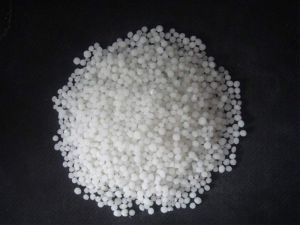
Water Soluble Fertilizer
Water-soluble fertilizers have become an imperative part for agriculture crop production. Water Soluble Fertilizer is a compound fertilizer that can be completely soluble in water, easily absorbing more crops. The added advantage is, it can be applied in spray irrigation realizes the integration of water and fertilizer to save water, fertilizer and labour. Straight fertilizer is a fertilizer that contribute single nutrient to the crops. Straight fertilizer can be used straight to the crops but the nutrients that have been supply are incomplete. Straight fertilizers are mixed with other types of fertilizer to formulate mixed fertilizer and compound fertilizer. The benefit of this straight fertilizer is it cost less compared to other fertilizer.
...more
potash fertilizer
Sulphate of Potash fertilizer is commonly added to improve the yield and quality of plants. Over the world many farmers use potash in various forms. It has a solid composition that helps in covering any deficiency that a growing crop may need. It is most suitable with the foliar and drip system and very easy to use.
...more
NPK Fertilizer
NPK 13-40-13 is one unique product that has the most important nutrients that plants need at various phases of growth. This grade is suitable for all crops and helps in root development. It has potash, nitrogen and phosphorous in a single product in good measure. NPK 13-40-13 is water soluble fertilizer and can easily use by new farmers. Almost all crops can use it without any adverse reactions. It can also add to the production capacity.
...more
Monoammonium Phosphate
Monoammonium Phosphate is one of the best sources of potassium. It is a 100% water-soluble fertilizer. Once it is fed to the crops it makes sure that all plants are able to withstand all the vagaries of nature. If a plant does not have phosphorous, Monoammonium Phosphate offers the best low-cost solution for the farmer. Its good nitrogen content makes it valued for the fauna.
...more
Ammonium Sulfate
Ammonium sulphate is one of the first and most widely used nitrogen (N) fertilizers for crop production. It is now less commonly used, but especially valuable where both N and sulfur (S) are required. Its high solubility provides versatility for a number of agricultural applications. Ammonium sulphate Fertilizer (sometimes abbreviated as AS or AMS) has been produced for over 150 years. Initially, it was made from ammonia released during manufacturing coal gas (used to illuminate cities) or from coal coke used to produce steel. It is made from a reaction of sulfuric acid and heated ammonia. The size of the resulting crystals is determined by controlling the reaction conditions. When the desired size is achieved, the crystals are dried and screened to specific particle sizes. Some materials are coated with a conditioner to reduce dust and caking. Most of the current demand for ammonium sulphate is met by production from by-products of various industries. For example, ammonium sulphate is a co-product in the manufacturing process of nylon. Certain by-products that contain ammonia or spent sulfuric acid are commonly converted to ammonium sulfate for use in agriculture. Although the color can range from white to beige, it is consistently sold as a highly soluble crystal that has excellent storage properties. The particle size can vary depending on its intended purpose.
...more
Ammonium Phosphate
1. It is 100% water soluble fertilizer & can be used for fertigation or foliar sprays, It offers superior nutrition as it provides highest nutrients (i.e 73%, It is better fertigation solutions keeping the pH efficiency stable at around 4.5, It has urea free Nitrogen hence it can give better availability of Nitrogen through ammonia (as it will prevent leaching via fertigation systems),It can also be applied as a fire retardant for paper, timber, and fabric. It can be a coating agent for fire prevention. The dry powder of fire extinguishers contains this ingredient. In the food processing industry, it is nourishment for grading foods. In case of agricultural industry where its most benefits are seen, it is applied below the surface of the soil. Farmers spread it across the farmland during the tilling process. It is an essential ingredient of suspension fertilizers. The P2O5 equivalent content of high-purity MAP is usually 61%. As long as it is used in the first stages, i.e. tilling process, it is an important nutrient.
...moreBe first to Rate
Rate This